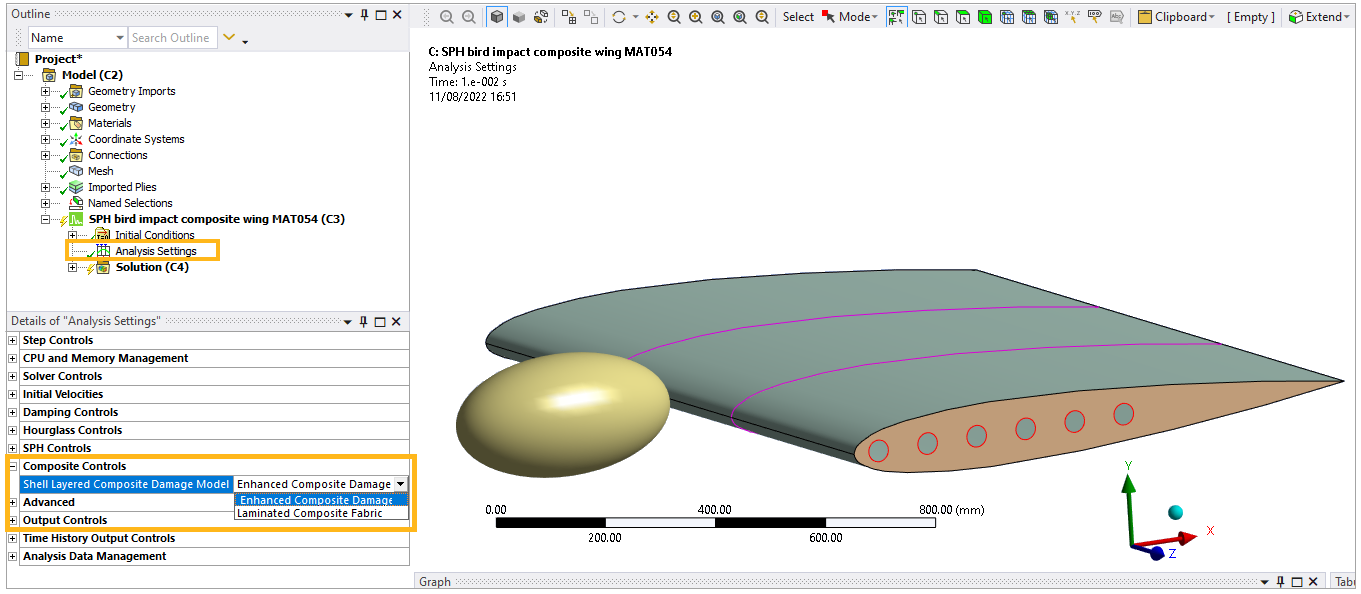The material data required for the LS-DYNA model is defined in the Engineering Data. There are two ways the LS-DYNA material cards are generated from the workflow:
Ansys standard material property definitions are automatically converted into the equivalent LS-DYNA material model.
Once the ACP model is transferred to the LS-DYNA system, you can choose which LS-DYNA composite material model is used by selecting Composite Damage Model in Composite Controls, located under Details of Analysis Settings. This converts a basic set of parameters. This is a global control which defines the entire composite model by one of the two available material models:
ENHANCED_COMPOSITE_DAMAGE / *MAT054
LAMINATED_COMPOSITE_FABRIC / *MAT058
You directly define the LS-DYNA material model.
Composite structures are often made of different materials, each exhibiting its own material behaviors. This might require using multiple material models. Engineering Data simplifies the task by giving you access to several LS-DYNA material cards, allowing complete control over stiffness and damage parameters as well as degradation properties.
The model used in this example contains a unidirectional and a woven material. Each is represented by a specific LS-DYNA material model:
UD - *MAT_ENHACED_COMPOSITE_DAMAGE/*MAT054
Woven - *MAT_LAMINATED_COMPOSITE_FABRIC/*MAT058




